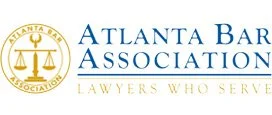What Is a Settlement Release Agreement, and How Does It Work after a Georgia Car Accident?
Key Points:
- In a car accident settlement, the insurance company agrees to pay a certain amount of compensation in exchange for a “release” of legal liability.
- If you’re the injured party, that means you’ll receive a check in return for giving up your right to pursue further legal action for damages against the at-fault driver and their insurance carrier.
- Before signing, you should understand the full extent of your injuries and costs and the legal consequences of the release agreement.
- After the settlement release agreement is signed, the insurance company is obligated to process the payment and issue a check in a reasonable time frame.
Table of Contents
Most car accident claims are settled out of court after negotiations between the attorneys representing the injured victim and the at-fault driver’s insurance company. In a settlement, the insurance company agrees to pay a certain amount of compensation in exchange for a “release” of legal liability.
If you’re the injured party, that means you’ll receive a check in return for giving up your right to pursue further legal action against the at-fault driver and their insurance carrier. This may sound straightforward, but the specific terms and conditions used to resolve the claim can vary from case to case. To protect your rights, your attorney should carefully analyze how the language of the release agreement can impact you before you sign the document.
When negotiating the terms of a settlement agreement, you and your attorney should consider the following issues:
- Do you want a broad or narrow release of claims? You may have more than one claim or have a claim against multiple parties related to the accident. You should consider which specific claims you want to release as part of the settlement agreement and make sure the terms precisely capture the scope of the release.
- Do you want to release unknown claims? Some injuries or other expenses related to the accident may not be known until much later. If you sign a release that includes unknown claims, you won’t be able to pursue compensation for those costs down the road.
- Who should bear fees and costs? Parties to a settlement agreement often bear their own legal fees, but there may be other costs that the parties share.
- How and when should the settlement payment occur? Once a settlement is reached, you should expect to receive a check within a month or two. Payment can take longer if the settlement involves a child or an incapacitated adult.
- Who is allowed to know about the settlement agreement? Settlement agreements typically include a provision explaining confidentiality obligations, and parties usually agree that the settlement terms must remain confidential.
- Is the release enforceable under applicable state law? You should understand the jurisdiction that applies to your case because your settlement release agreement must comply with the laws of that state. Certain provisions that are permitted in one state may not be allowed in another.
What Is a Settlement Release Agreement?
A settlement release agreement is an enforceable contract between parties in a legal dispute that terminates a liability claim in exchange for a certain amount of compensation. The terms and conditions of the agreement state what is settled between the parties, and a party may be held liable for any claim not specifically outlined in the release provisions.
A settlement release agreement typically states the payment amount, the parties being released, and the claim(s) being released, such as bodily injury, pain and suffering, and property damage. Before signing, you should understand the full extent of your injuries and costs and the legal consequences of the release agreement. Once you’ve agreed to release a party from a liability claim, you cannot seek more damages from them in the future.
What Is Included in a Settlement Release Agreement?
The terms and conditions of a settlement release agreement vary from case to case, but the document you may sign typically includes the following:
- A summary of the legal dispute
- Identification of the releasor/injured party and the releasee/responsible party, including names and addresses
- Specifics of the claim(s) covered by the agreement and any that may be excluded
- Responsible party released from future payment
- Injured party giving up the right to sue
- Explanation of payment
- Nonadmission of fault
- Confidentiality provision
- Statutory law governing the agreement
Who Reviews and Signs a Personal Injury Settlement Agreement?
A settlement release agreement is typically prepared by the attorney representing the at-fault driver’s insurance company and then sent to the lawyer representing the injured accident victim for review. If your lawyer decides that the terms of the agreement are unacceptable, or not in your best interest, they will object and negotiate with the defense attorney to make necessary changes. For example, your attorney may object to a settlement that does not account for all your damages.
Once the agreement is acceptable to both parties, you will need to sign it in front of a notary public. After you sign the contract and return it to the defense attorney, the terms and conditions are final and may be legally enforced.
Note that if you intend to file an underinsured motorist claim under your own policy—which you may need to do if the at-fault driver’s coverage limit prevents you from being fully compensated for your costs—you should get permission from your insurance carrier before signing a release. Otherwise, your carrier may deny your claim.
Why Insurance Companies Have This Type of Agreement?
Insurance carriers have a contractual duty to protect their insureds from legal claims arising from accidents. A release of claims is a type of liability waiver, which means you cannot pursue additional compensation through a negligence claim after you accept the settlement. By requiring you to sign a release in exchange for payment, the carrier can ensure that you don’t file a lawsuit against the insured or the insurance company in the future.
Is It Possible to Obtain a Settlement and Avoid Signing a Settlement Release Agreement?
Most insurance companies will not agree to pay out a settlement unless you sign a release. If you intend to pursue certain claims or portions of your claim after the settlement is finalized, your lawyer needs to negotiate the language necessary to specifically exclude those claims or portions from the release agreement before you sign it.
What Happens Once a Settlement Agreement Is Signed?
After you sign the settlement release agreement and your lawyer sends the document to the defense attorney, the insurance company is obligated to process the payment and issue a check in a reasonable time frame.
Unless the settlement involves a child or an incapacitated adult (which must go through a state or probate court), you or your attorney will typically receive the settlement check within a month or two. If you don’t receive your check within this time frame, your attorney should contact the carrier to determine the cause of the delay.
Because a settlement agreement is a binding contract, your attorney can file a lawsuit if the other party fails to make payment in a timely manner under the terms of the document.

 1201 West Peachtree Street #2339 Atlanta, GA 30309+1-770-212-3795$0-$100000
1201 West Peachtree Street #2339 Atlanta, GA 30309+1-770-212-3795$0-$100000What a great law firm! I truly enjoyed my experience with them. They continue to show why they are leaders in the industry. I strongly recommend them!
















